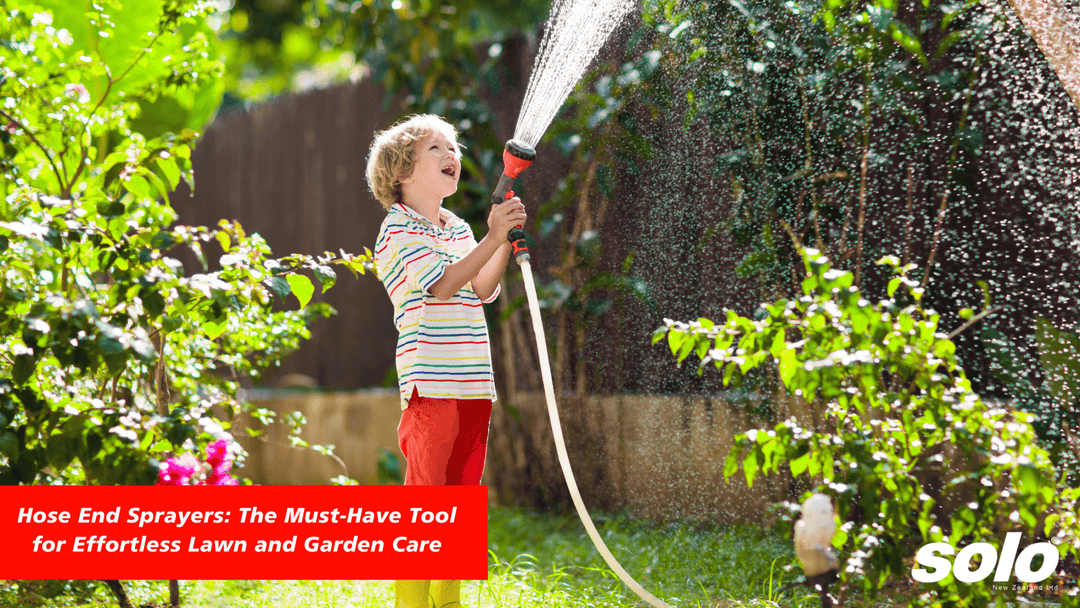Solo’s guide to spring lawncare

After a long, cold, wet winter, spring is finally here and lawncare is on the agenda. Temperatures are rising, days are getting longer, and spring rains are on their way (which is a good thing in terms of lawncare – read on!). We Kiwis take great pride in our lawns, and to make sure we have lush, green goodness throughout the scorching summer months, we need to be ramping up our lawncare in spring!
If you’ve been guilty of ignoring your yard over the winter, you’re not alone. Looking out the window, you may even blanche at the prospect of the job ahead of you. But don’t get overwhelmed. We at Solo NZ have got you this spring! Just follow our step-by-step guide below and your lawns will be the envy of the neighbourhood.
Scarify/dethatch
Scarifying can be a scary prospect – it can be a big job and your lawn may not look very good directly afterwards. But we promise, in a few weeks, you’ll be glad you did it.
When you scarify/dethatch your lawn, you’re removing the thatch-like layer matter that has formed a barrier between the grass and the soil. This layer can stop water and nutrients getting through to the soil, starving your lawn. Scarifying will also aerate your lawn, ready for fertilising and overseeding.
Not all lawns will need scarifying, so check to see if yours does before you start. The quick way to determine this is, if your lawn has thick, spongy patches or moss, you’re going to need to get out your scarifier to deal with it.
Spray for weeds, spray to feed
You want to feed your lawn a good quality, specially-blended fertiliser to give your lawn all the nutrients, nitrogen and iron it needs to grow full and lush. Feeding your lawn also discourages weed growth – the healthier and more well-fed the lawn, the less able weeds are to get a foothold. When choosing a weed killer, make sure it specifically targets weeds so it won’t harm your lawn.
There are many products on the market that combine weed killer and fertiliser, so do your research as some are better for specific kinds of grass.
Use a sprayer that suits the size of your lawn – from a 5L manual sprayer for a small area, to a 16L powered, backpack sprayer for larger areas. You might even consider attachments with multiple nozzles for maximum efficiency when you’ve got a big job.
Spread your seed
Good lawncare takes into account the need for good grass coverage. Now that you’ve prepped your lawn by dethatching, weeding, and feeding, you’re ready to replenish the existing grass with more seed. Be sure to use the same seed as the existing grass or you’ll have patches of different colour and texture.
You might be tempted to sprinkle grass seed by hand, but we recommend a proper spreader, especially on bigger lawns. This will distribute it evenly and make the job much easier.
Add a thin layer of topsoil over your freshly spread seeds for best germination.
Fertilise, fertilise, fertilise
To give your existing and newly-sown grass the best chance at full growth, apply a suitable fertiliser to your lawn. Many fertiliser brands will recommend a schedule to stick to – usually somewhere around every two to three months.
For the few weeks following over-sowing, go easy on your lawn when mowing and mow at a higher setting than you usually would, and never scalp your lawn.
So, ready to get serious about lawncare? Contact the team at Solo NZ – our experts will set you up with the equipment that best suits your needs.




















Leave a comment